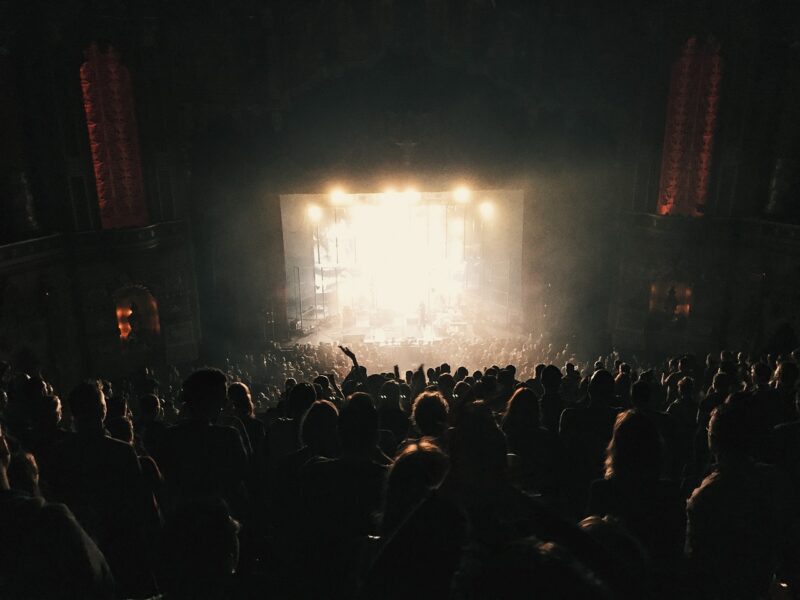Exploring the Secretive World of Underground Rap Battles in the 2000s
November 12, 2024

The world of rap has always been rife with cultural expression, angst, and competition. However, within this plethora of styles and genres lies a unique phenomenon – the underground rap battles of the 2000s. These events not only served as entertainment but also became a breeding ground for some of the most significant lyrical talent in the hip-hop scene.
1. The Historical Context of Rap Battles
To understand the underground rap battles of the 2000s, it’s vital to reflect upon their historical roots. Hip-hop originated from block parties in the Bronx during the late 1970s, evolving into a global movement. Rap battles, as an art form, can be traced back to these gatherings where MCs would engage in lyrical duels to showcase their skills. But by the 2000s, these battles took on a different tone, shifting from street corners to organized events in dimly lit venues.
The proliferation of the internet brought about a visible change. Platforms like YouTube began highlighting these battles, allowing artists who once performed for local audiences to reach worldwide recognition. However, many battles remained underground, characterized by their resiliency to commercialize or sanitize the rawness that defined them.
2. The Structure of Underground Rap Battles
Underground rap battles were often informal yet structured events where two artists would face each other, exchanging verses. The format varied, but commonly consisted of 60 to 90-second verses where competitors would attempt to outsmart each other through clever wordplay, punchlines, and impactful delivery.
Typically, battles were broken down into the following stages:
- Set-Up: Artists would introduce themselves and hype up the crowd, setting the tone for the battle.
- First Round: The first competitor delivers their verse, often aiming to establish dominance and make personal digs at their opponent.
- Response Round: The opponent responds, attempting to counterattack with effective rebuttals.
- Final Round: Often the most intense, this round allows both artists to go all out before the crowd decides the winner. Judges or audience votes often determine the victor based on the quality of lyrical content, delivery, and crowd reaction.
Underground battles were raw and filled with unscripted talent, contrasting sharply with the polished representations of mainstream rap.
3. Key Figures in the Underground Scene
Several artists emerged during the 2000s that played pivotal roles in the underground rap battle scene. Their inventive styles and lyricism paved the way for many aspiring rappers.
– MF DOOM: A mysterious figure known for his intricate rhymes and masked appearance. MF DOOM often participated in various battle circuits, influencing many with his unconventional lyrical structures.
– Cam’ron: While later recognized in mainstream circles, Cam’ron’s underground battles resonated due to his streetwise storytelling and charismatic presence.
– Saigon: Known for his raw and emotional delivery, Saigon gained attention in the underground scene before crossing over into mainstream hip-hop.
– Canibus: Famous for his complex lyricism and battle prowess, Canibus became a legendary figure, remembered for battles against other heavyweight competitors.
– Eminem: Though he transitioned to mainstream success, his roots in battle rap and competitions like “8 Mile” helped redefine the mainstream perception of battle rap.
These artists often encountered not just competition, but also camaraderie as they navigated a complex web of rivalry and respect within the underground scene.
4. The Cultural Significance of Underground Rap Battles
Underground rap battles served as more than just entertainment; they became cultural landmarks, reflecting the social issues prevalent in the 2000s. From economic disparity to racial injustices, artists used these platforms to articulate their frustrations. This layering of music as a vessel for social commentary fostered a unique bond between artists and their audiences.
Furthermore, these battles cultivated a sense of authenticity. As rap grew in commercial success, many felt that the genre had lost touch with its roots. Underground battles, brimming with unfiltered expression, kept the essence of hip-hop alive. They showcased real talent devoid of commercial constraints, offering a stage for those often overlooked by the mainstream.
This dilemma drove many aspiring artists toward underground scenes, resulting in a unique coalescence of talent that allowed raw and revealing narratives to flourish.
5. The Evolution to Modern Platforms
As technology advanced, so did the landscape of rap battles. The rise of social media platforms and video-sharing websites like YouTube transformed how battles were conducted and consumed. The underground battles of the 2000s paved the way for more structured platforms such as “URL (Ultimate Rap League)” and “King of the Dot,” which provided avenues for aspiring artists to gain visibility and achieve fame.
Despite these changes, the underground ethos often remains. Organizations prioritize maintaining the authenticity of the craft, continuing to represent the skill set and creativity that characterized the original battles. Collaborations between past legends and current artists reveal an ongoing commitment to preserving this art form.
6. Conclusion: The Lasting Legacy of Underground Rap Battles
Underground rap battles of the 2000s have undoubtedly left an indelible mark on hip-hop culture. They not only spotlighted formidable talent but also reinforced the genre’s commitment to social commentary and authenticity. As rap continues to evolve, the legacy of underground battles remains influential, standing as a testament to the power of spoken word and community in a dynamic world.
For those who appreciate the art of lyricism and raw talent, exploring the underground rap battles of the 2000s reveals an unforgettable chapter in the story of hip-hop – one that continues to inspire future generations across the globe.






